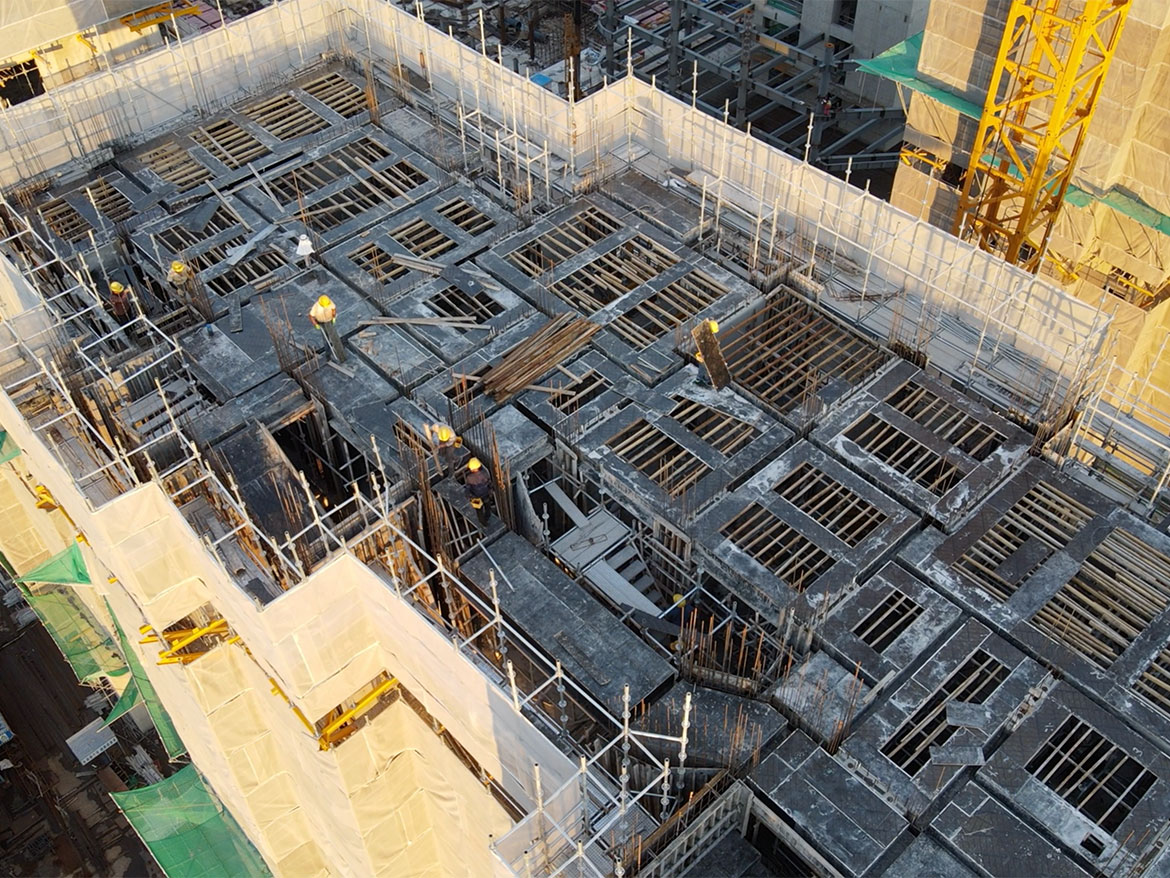Commercial Contractors Upbeat Despite Continued Supply Shortages

Supply shortages and price hikes continue to hamper the roofing industry, but the latest U.S. Chamber of Commerce Commercial Construction Index indicates contractors are optimistic on revenue and business opportunities.
Thanks to a combination of multiple issues, including the COVID-19 pandemic, trade wars and an above-average 2020 storm season, the raw material components manufacturers need to create products are simply not available. As a result, everything from petroleum-based products to wood are in short supply, making it difficult for contractors to complete projects on time.
“We used to be able to get most of what we needed around that one-week time period and now we’re going upwards of three weeks to a month depending on what type of product you’re looking for,” said Keenan Young, general manager at Coryell Roofing and Construction. “We haven’t run into any issues where it’s just not available, it’s just longer lead times.”
The U.S. Chamber of Commerce’s quarterly report shows 84% of contractors are facing at least one material shortage, up from 71% in the first quarter. The top shortage reported is wood/lumber (33%), followed by 29% saying steel is hard to come by. Of those contractors who are experiencing shortages, nearly half (46%) say it’s having a “high impact” on projects, up from 20% in Q1.
Nearly half of responding contractors (46%) say less availability of building products are their biggest concern, up from 33% in the previous quarter.
"We’re facing a challenge this year that no one in the roofing industry has ever seen,” said Ted Boylan, founder of Massachusetts-based North Bridge Building Products and an industry veteran of 41 years.
Almost all of the contractors (94%) said cost fluctuations are having a moderate to high impact on business, up 12 percentage points from Q1. This tracks with RC's State of the Industry report, which surveyed contractors in the fall of 2020. At the time, 43% of commercial contractors were concerned about building material price increases, showing just how fast the supply chain disruption problem has grown.
Boylan confirmed that roofing contractors are grappling with shortages in nearly every critical roofing component, and sharp increases in the price of steel, copper, lumber and insulation. He started warning roofers of pending shortages in early March. Slowed by the pandemic and an anticipated decline in demand due to economic uncertainty, manufacturers didn’t build inventory over the winter months. That, coupled with the capacity limitations of manufacturing in the United States, means suppliers are already behind, and likely won’t meet demand in the summer months for commercial roofing.
“There’s no way to catch up this year,” Boylan explained. “There’s nothing since the 1980s until now that I’ve seen that represents the situation. There’s a lot of business out there and no material to put down and this summer and fall are going to be very, very difficult.”
Despite the difficulties caused by material shortages, commercial contractors are expressing optimism. The overall index score for the report rose to 65, its highest reading since Q1 2020 (just before the pandemic took hold). The index shows 89% of contractors reporting moderate to high levels of confidence in new business.
“Businesses are experiencing a great resurgence as vaccines allow the economy to fully reopen. Rising optimism from the commercial construction industry reflects what we’re seeing across the broader economy,” said U.S. Chamber of Commerce Executive Vice President and Chief Policy Officer Neil Bradley. “However, contractors continue to face challenges navigating materials shortages and finding enough skilled workers to avoid having to turn down projects.”
Roofing Industry Still Short in Supplies, Laborers
Young shares in the optimism expressed by the index report, bolstered by the fact that the majority of Coryell Roofing's customers have been understanding about price hikes or delays.
“I haven’t had anybody that has come out and been upset when we come to them and say, ‘Hey, there’s been a price increase, we’ve got to adjust something,’” he said. “There’s nothing we can do to control it.”
Trent Cotney, CEO of Cotney Attorneys & Consultants, said his offices are constantly dealing with supply chain issues his clients are facing. He said while there are material problems on the residential side of the industry, the majority of them have come from commercial roofing contractors.
“I have spent the majority of my days figuring out how to adjust contracts before they’re executed or how to deal with a problem after you’ve got an executed contract,” Cotney said. “I don’t think it’s going to disappear anytime soon.”
He noted that, similar to what happened with toilet paper at the onset of the pandemic, contractors are starting to buy in bulk and hoard materials. Cotney said contractors could consider strategic plans to stockpile essential materials, but warns against exhausting cash flow to purchase extra materials.
“Cash is still king, it will always be king, and while I anticipate … we’re going to continue to see this volatility, I think that I would recommend some caution and make sure all pre-purchases done are done based on absolutely you’re going to use it, you’re just spending it now rather than risking not having it later,” he said.
Contractors will need that cash, as the index report shows the workforce crisis continues to plague the industry. Most contractors (87%) expressed concerns over labor costs, with 64% saying costs have increased in the past six months.
In Q2, 88% of contractors report moderate to high levels of difficulty finding skilled workers, of which 45% report a high level of difficulty. Just over a third of contractors (35%) experiencing labor difficulties said they’ve had to turn down work.
RC Editor Art Aisner contributed to this article.
Looking for a reprint of this article?
From high-res PDFs to custom plaques, order your copy today!






